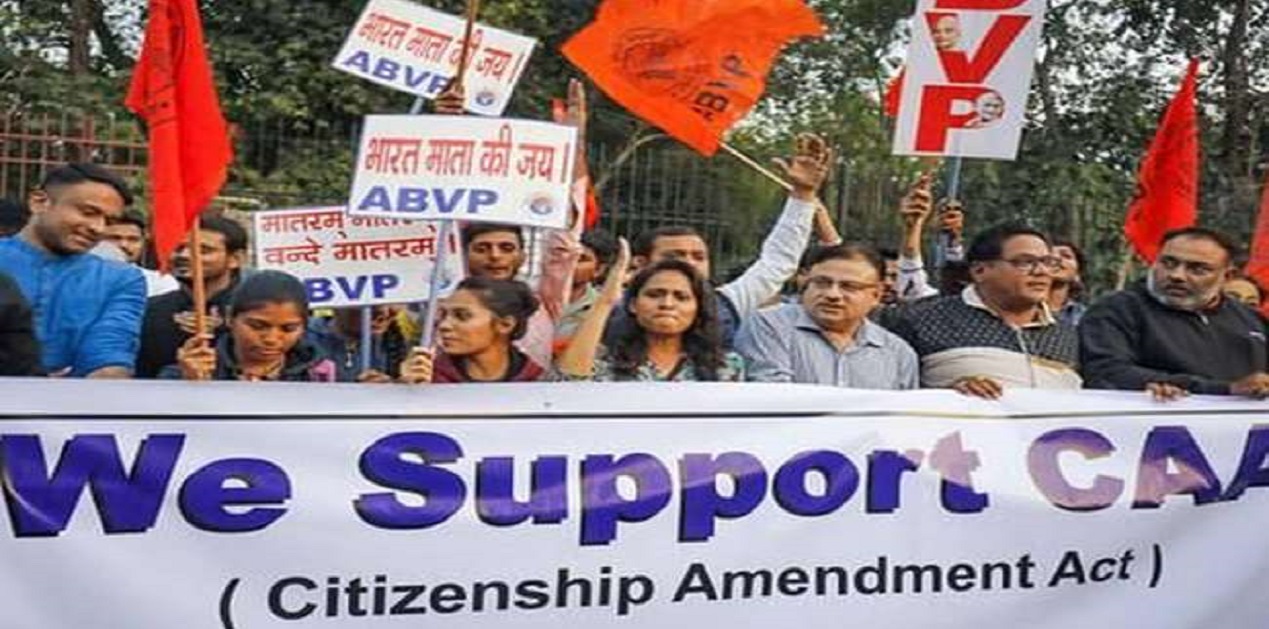CAA is not against any religion but against religious persecution


Citizenship (Amendment) Act, 2019 was passed by the Parliament of India to provide a path to Indian citizenship for persecuted religious minorities that fled Pakistan, Bangladesh and Afghanistan (officially Islamic countries) and who entered India on or before 31st December 2014. The CAA only applies to migrants from those three countries and it doesn’t apply to any Indian citizens.
The original Citizenship Act was enacted by Indian parliament in 1950. It guaranteed citizenship to all the residents of India at the time of the adoption of Indian Constitution in January 1950. The act did not mention any religion. Here it should be remembered that at the time of Indian partition in two countries – India and Pakistan – India chose to be a constitutional secular democracy while Pakistan chose to be an Islamic state with very limited rights for minorities (e.g. Pakistan’s constitution specifically denies high public offices to non -Muslims.) Since partition, the actual number of Muslims in India have increased significantly and they have reached quite high posts both in government and in private sectors. At the same time the population of religious minorities in Pakistan and Bangladesh (previously East Pakistan) had gone down from 25% to below 10%.
Why Muslims from these three countries may not be welcome. Muslims from these countries come to India for economic reasons. The economy of these countries is in shambles (because of, at least in part, their anti-Indian stance and being perpetrator of terrorism). India, because of its population density, a high unemployment rate (though better than those three countries but still fragile) cannot afford to accept immigrants in large numbers. Over the past few decades, a very large number of migrants have illegally crossed the border and it was felt that among those, persons with religious persecution need priority in obtaining citizenship.

This is not a new issue. Former Prime Minister, Dr. Manmohan Singh 2003 in Rajya Sabha (Upper house of Parliament) spoke thus about the persecuted minorities entering India from Bangladesh, “After the partition of our country, minorities in countries like Bangladesh have faced persecution, and that if circumstances force people – these unfortunate people – to seek refuge in our country, our approach to granting citizenship to these unfortunate persons should be more liberal.” And this was very much the heart of Liaquat-Nehru pact at the time of Partition of India and Pakistan.
The same parties which championed for a similar bill then are now unleashing a false propaganda to mislead people for their own selfish reasons, and fuels fear in Muslims to resort to violence. They are insulting refugees who were persecuted just because they follow a different religion other than the state religion, Islam in those countries.

It is very obvious from the media reports that most of the people who participated in the protests have no understanding of the CAA. CAA is not against any religion, but it is against the religious persecution. It aims to welcome the minorities persecuted in India’s neighboring countries. By not specifically including Muslims from Bangladesh, Pakistan and Afghanistan, the amendment recognizes the well known fact that people belonging to faiths other than Islam have been persecuted in these Islamic countries because of their faith.
India has been one of the most generous countries in the world. India has time and again accepted refugees belonging to all religions from many countries. India accepted Jews, Parsis, Tibetans and many other ethnically different people in addition to their own Indian diaspora from Uganda etc. CAA provides an opportunity for persecuted Indian diaspora to become Indian citizens from three countries which have been officially declared as Islamic republics and all minorities are forced to live in pathetic conditions as second class citizens.
Published by Voice of India commitee
DISCLAIMER: The author is solely responsible for the views expressed in this article. The author carries the responsibility for citing and/or licensing of images utilized within the text.
